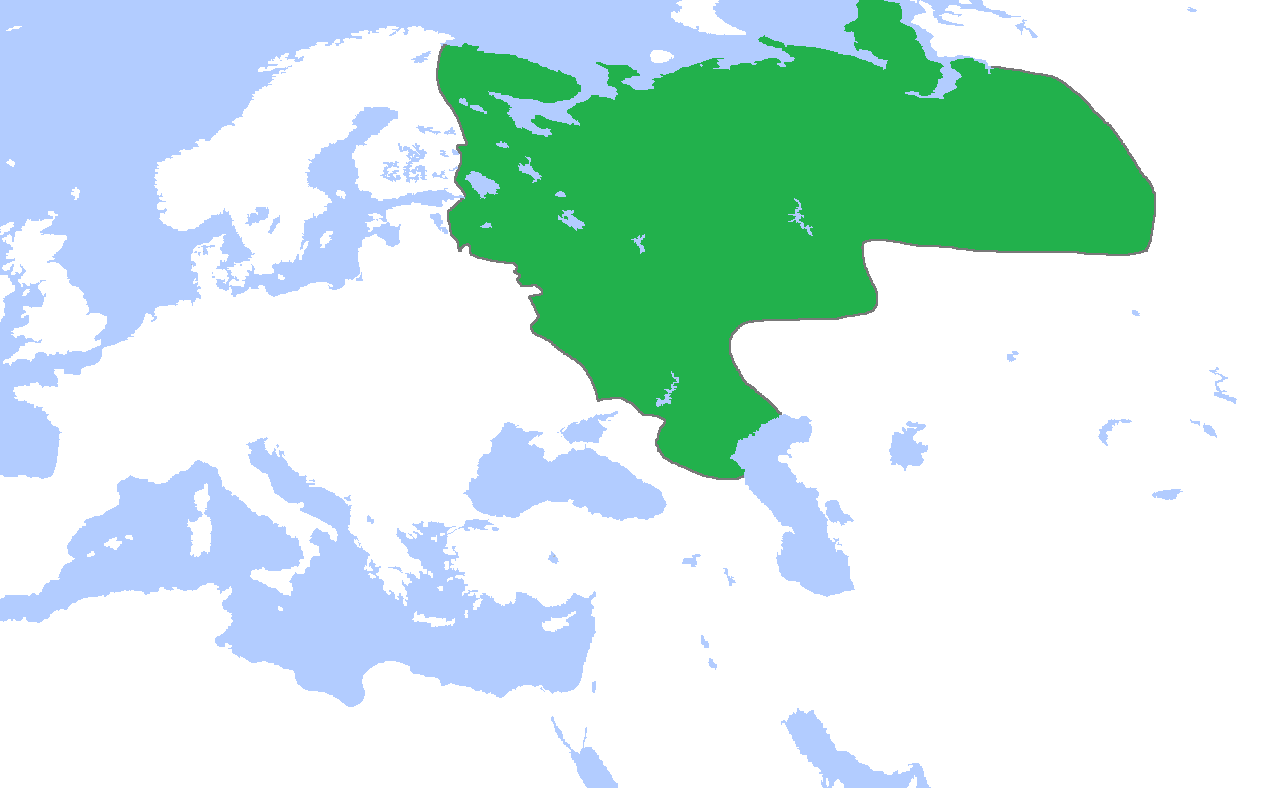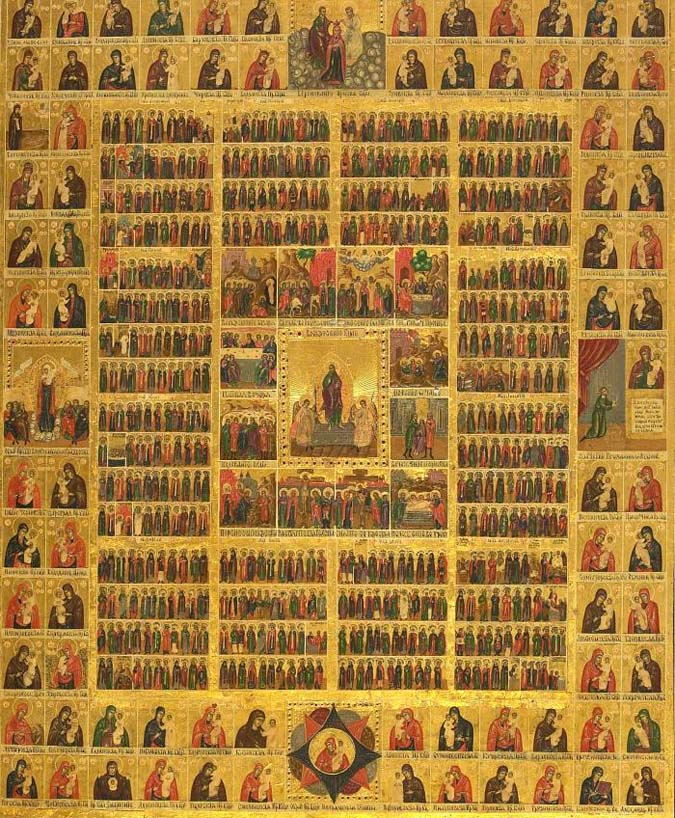|
Bogolep
Bogolep () is an archaic Russian Orthodox Church monastic name created as a calque of the Greek word Theoprepēs (), "God-befitting", "marvellous" Theoprepēs, known in Russia as was a martyr venerated in Russian Orthodoxy. Litvina and Uspensky write that the name is known as an exclusively monastic one, although there are some vague indications that the name could have been used by lay mwn. A number of Russian Orhtodox monks had this name, including: * Bogolep of Chorny Yar (1647 - 1654), Russian monk venerated in Russian Orthodox Church *Bogolep was the monastic name accepted by Boris Godunov before the deathАнна Феликсовна Литвина, Федор Борисович Успенский Подлинные и мнимые имена Бориса Годунова (The True and Fake Names of Boris Godunov), * ( 1700), Russian Orthgodox bishop * (1911-1978) - Archbishop of Kirovograd and Nikolaev of the Russian Orthodox Church * (born 1978) is the Archbishop of A ... [...More Info...] [...Related Items...] OR: [Wikipedia] [Google] [Baidu] |
Bogolepov
Bogolepov (), feminine: Bogolepova is a Russian surname of two possible, related, origins, both associated with the calque from the Greek word Theoprepēs, "God-befitting". It may be a patronymic surname derived from the given name Bogolep or it may be an arbitrary Russian surname originated in clergy, given to a pleasantly-looking or pious student of a seminary., ''Русские фамилии. Популярный этимологический словарь'', Moscow, 1972p. 34 Quote: "БОГОЛЕПОВ. Семинарская фамилия. Лепый (красивый) как бог, то есть одаренный божественной красотой. Может быть, и от имени Боголеп — так в святцах было переведено греческое имя Феопрепий." Notable people with the surname include: * Alexander Bogolepov (1886 – 1980), Russian theologian and religious writer *Nikolay Bogolepov Nikolay Pavlovich ... [...More Info...] [...Related Items...] OR: [Wikipedia] [Google] [Baidu] |
Bogolep Of Chorny Yar
Bogolep of Chorny Yar (; secular name Boris Yakovlevich Ushakov, ; May 2, 1647 - August 1, 1654) was a Russian Orthodox child schema-monk, a locally venerated saint of the Russian Orthodox Church (venerable). Life He was born in Moscow into an old and influential Russian house of Ushakovs (accordingly, he was a distant relative of two later saints: hieromonk Theodore of Sanaksar and Admiral Fyodor Ushakov). His father was a boyar named Yakov Lukich Ushakov. His mother named and Yekaterina Vasilyeva Ushakova. In baptism, he was named Boris in honor of the Prince Boris Vladimirovich. His father was appointed voyevoda to Chorny Yar (now Astrakhan Oblast, Russia) in 1651. The life tells that the child was very pious from an early age: as a baby he observed fasts on Wednesday and Friday, cried at the sound of the bell, thereby indicating that he should be carried to church. Boris was in very poor health: at the age of 7, he developed an ulcer on his leg, which soon passed, but ... [...More Info...] [...Related Items...] OR: [Wikipedia] [Google] [Baidu] |
Boris Godunov
Boris Feodorovich Godunov (; ; ) was the ''de facto'' regent of Russia from 1585 to 1598 and then tsar from 1598 to 1605 following the death of Feodor I, the last of the Rurik dynasty. After the end of Feodor's reign, Russia descended into the Time of Troubles. Early years Boris was the son of Feodor Ivanovich Godunov "Krivoy" (, died c. 1568–1570) and his wife Stepanida Ivanovna. His older brother Vasily died young and without issue. There is a version according to which the Godunovs were descended from the Tatar ''murza'' Chet, who came to Russia in 1330 during the reign of Ivan Kalita. This version was included in later editions of the 16th-century '' Gosudarev Rodoslovets'', but historians have raised doubts about this version of Godunov's ancestry due to various chronological and genealogical issues. Godunov's career began at the court of Ivan the Terrible. He is mentioned in 1570 for taking part in the Serpeisk campaign as an archer of the guard. The following yea ... [...More Info...] [...Related Items...] OR: [Wikipedia] [Google] [Baidu] |
Russian Orthodox Church
The Russian Orthodox Church (ROC; ;), also officially known as the Moscow Patriarchate (), is an autocephaly, autocephalous Eastern Orthodox Church, Eastern Orthodox Christian church. It has 194 dioceses inside Russia. The Primate (bishop), primate of the ROC is the patriarch of Moscow and all Rus'. The History of the Russian Orthodox Church, history of the ROC begins with the Christianization of Kievan Rus', which commenced in 988 with the baptism of Vladimir the Great and his subjects by the clergy of the Ecumenical Patriarch of Constantinople, ecumenical patriarch of Constantinople. Starting in the 14th century, Moscow served as the primary residence of the Russian List of metropolitans and patriarchs of Moscow, metropolitan. The ROC declared autocephaly in 1448 when it elected its own metropolitan. In 1589, the metropolitan was elevated to the position of patriarch with the consent of Constantinople. In the mid-17th century, a series of reforms led to Schism of the Russian ... [...More Info...] [...Related Items...] OR: [Wikipedia] [Google] [Baidu] |
Monastic Name
A religious name is a type of given name bestowed for religious purposes, and which is generally used in such contexts. Christianity Catholic Church Baptismal name In baptism, Catholics are given a Christian name, which should not be "foreign to Christian sentiment" and is often the name of a saint. In East Asia, in Africa and elsewhere, the baptismal name is distinct from the traditional-style given name. Traditionally, Orthodox and Catholic Christians celebrate their name day (i.e., the feast day of their patron saint), in addition to their birthday. Confirmation name In some countries, it is common to adopt a confirmation name, always the name of a saint, in addition to the baptismal name. The saint whose name is taken is henceforth considered to be a patron saint. Religious name In general, religious names are used among the persons of the consecrated life. In most religious institutes, a new member is traditionally either given a religious name or chooses one. This coul ... [...More Info...] [...Related Items...] OR: [Wikipedia] [Google] [Baidu] |
Calque
In linguistics, a calque () or loan translation is a word or phrase borrowed from another language by literal word-for-word or root-for-root translation. When used as a verb, "to calque" means to borrow a word or phrase from another language while translating its components, so as to create a new word or phrase ( lexeme) in the target language. For instance, the English word ''skyscraper'' has been calqued in dozens of other languages, combining words for "sky" and "scrape" in each language, as for example in German, in Portuguese, in Dutch, in Spanish, in Italian, in Turkish, and ''matenrō'' in Japanese. Calques, like direct borrowings, often function as linguistic gap-fillers, emerging when a language lacks existing vocabulary to express new ideas, technologies, or objects. This phenomenon is widespread and is often attributed to the shared conceptual frameworks across human languages. Speakers of different languages tend to perceive the world through common categori ... [...More Info...] [...Related Items...] OR: [Wikipedia] [Google] [Baidu] |
Layman
In religious organizations, the laity () — individually a layperson, layman or laywoman — consists of all members who are not part of the clergy, usually including any non-ordained members of religious orders, e.g. a nun or a lay brother. In secular usage, by extension, a layperson is a person who is not qualified in a given profession or is not an expert in a particular field. The phrase " layman's terms" is used to refer to plain language that is understandable to the everyday person, as opposed to specialised terminology understood only by a professional. Terms such as ''lay priest'', ''lay clergy'' and ''lay nun'' were once used in certain Buddhist cultures, especially Japanese, to indicate ordained persons who continued to live in the wider community instead of retiring to a monastery. Some Christian churches utilise lay preachers, who preach but are not clergy. The Church of Jesus Christ of Latter-day Saints uses the term ''lay priesthood'' to emphasise that its lo ... [...More Info...] [...Related Items...] OR: [Wikipedia] [Google] [Baidu] |
Russian Given Names
Russian given names are provided at birth or selected during a name change. Russian Orthodox church, Orthodox Christian names constitute a fair proportion of Russian given names, but there are many exceptions including pre-Christian Slavic languages, Slavic names, Communist names, and names taken from demographics of Russia, ethnic minorities in Russia. Given names form a distinct area of the Russian language with some unique features. The evolution of Russian given names dates back to the pre-Christian era, though the list of common names changed drastically after the Christianization of Kievan Rus', adoption of Christianity. In History of Russia, medieval Russia two types of names were in use: canonical names given at baptism (calendar or Christian names, usually modified) and non-canonical. The 14th century was marked by the elimination of non-canonical names, that ended by the 18th century. In the 20th century after the October Revolution the whole idea of a name changed. It ... [...More Info...] [...Related Items...] OR: [Wikipedia] [Google] [Baidu] |

